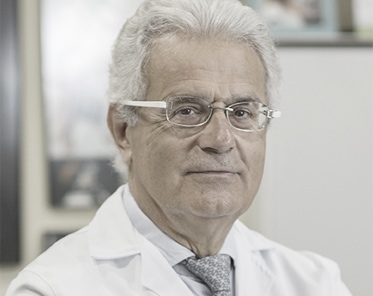Users
Enter the dynamic world of knee arthrometry through our exclusive Partners & Collaboration portal. Delve into detailed scientific reviews, thought-provoking blogs, and specialized training resources tailored to GNRB and Dynelax technologies. Discover your primary source for advanced learning and innovation in the field.
Where Industry Leaders Turn for Revolutionary Knee Care Solutions
They Trust Us
Witness a network where every icon is a gateway to innovation and trust. This space is not just a display; it’s a celebration of the collective efforts that drive us towards a future of advanced, reliable, and transformative healthcare solutions.
Don’t just take our word for it
Testimonials
Expert Insights: Transforming Healthcare – Explore the real-world impact of our solutions through the voices of medical experts. Esteemed orthopedic surgeons, dedicated sports doctors, skilled physiotherapists, and insightful radiology doctors share their experiences. These testimonials provide a glimpse into how our innovations are enhancing patient care and revolutionising medical practices. Discover the difference we’re making in the healthcare community.
To all users and those interested in the GNRB devices designed and patented by the Genourob Company.
Over the last 4 years, we have been intensively working the new method of Automatic Dynamic Laximetry, LDA, with its device the GNRB.
In addition to providing a state analysis of the state of the Anterior Cruciate Ligament (ACL) GNRB Gives a functional analysis as well.
So With the GNRB it’s possible to have a Dynamic Analysis of the stiffness of the ACL pre-surgery and of the graft post-surgery. It is useful in post-op follow-up for the graft Ligamentization assessment, and therefore a good indicator of the stability of the Knee.
The device is effective, reliable and easy to use and assists to improve diagnosis and treatment of the ACL injuries.

The main interest of this tool (but not the only one) in public health is to allow primary care doctors, and especially emergency physicians, to categorize knee sprains urgently, thanks to a simple-to-use tool in just a few minutes. This classification from the first consultation into a severe sprain (with ACL rupture) or mild (without ACL rupture) allows, on one hand, to avoid unnecessary and costly additional examinations (MRI) in the case of mild sprains, and on the other hand, to immediately adapt treatment to the severity of the sprain, avoiding, for example, unnecessary prolonged immobilizations.

I the undersigned, Doctor Henri ROBERT, Knee ACL surgeon specialist, confirm that the GNRB, ROTAM & DYNEELAX arthrometers are very accurate, reliable and with the best reproducibility in the world.
The arrival of the DYNEELAX revolutionizes the possibilities of the practitioner to regularly analyse the rotational and translational stabilities of the cruciate ligaments in the knee, using a non-invasive test, before and after surgery or as a preventive measure, or after partial tears. Numerous additional applications include notably the analysis of meniscus lesions (medial or lateral) which can be highlighted thanks to the rotational tests, as well as the functional analysis of the strength of the injured tissues.
The rotational analysis is an essential breakthrough as it allows the identification of rotational instabilities which are very difficult to detect with known clinical physical tests (pivot shift test, the Dejour test, dial test...). The DYNEELAX is the result of more than fifteen years of research and development which has led to the most advanced device in this field of study on an international level.
It is essential for surgeons to know the results of rotatory tests in order to adapt ACL surgery and perform or not an extra-articular tenodesis.
As much as translational stability could be controlled manually or with small manual laximetry tools, rotation has no suitable tool to validate this (nor any reliable clinical test due to the absence of relaxation necessary to carry out these tests properly).

This is a letter detailing my/our experience with use of the Genourob Dyneelax laximeter device.
We are a high volume tertiary referral arthroplasty centre and sports medicine centre in Western Australia. We are closely associated with the Orthopaedic Research Foundation of Western Australia.
We have had an excellent experience with the use of our Dyneelax device for multiple research projects, including novel investigation of the sagittal stability of total knee replacements and revision total knee replacements. We also have numerous projects working towards examining the stability of anterior cruciate multi-ligament knee reconstructions.
Our experience working with the company has been excellent. We are literally located on the other side of the world; however, they have gone over and above to help us with training and our customer support. I cannot recommend them highly enough.
In terms of the device, it is an excellent research tool which enables us to establish quantified measurement of the sagittal and rotational stability of multiple different knee arthroplasty devices, a measurement that hereto forth was impossible. This is generating high level novel research of an international interest.

My name is Michael Rüscher, I work in the field of conservative and operative orthopaedics as an osteopath and physiotherapist! I am currently working intensively on my PHD dissertation in the field of biomechanics.
I discovered the device Dyneelax from the company Genourob in the course of my research about 1 year ago and the idea was born to write the dissertation with this laximetry on the knee joint. I have now taken over 100 measurements on operated and conservative cruciate ligaments and am thrilled with the measurement method. It is simple and very reliable to use.
In my daily work with my brother Dr. Rudolf Rüscher we evaluate the cruciate ligaments by means of MRI and immediate laximetry.
We have already had 3 patients with a described complete cruciate ligament rupture who then showed no clear instability in the laximetry measurement, i.e. less than 1.5 mm at 100 Micro Newton. So we are excited about this functional study of this laximetry.
The topic of my dissertation is "Comparative investigation of the biomechanics (laximetry by Genourob) of the knee joint with rupture of the anterior cruciate ligament after surgical and conservative treatment under consideration of economic efficiency".
I would therefore like to thank the Genourob company once again for this innovative examination device!

